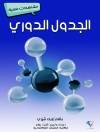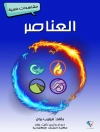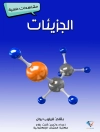Insects more similar in structure and physiology to mammals than plants or fungi. Consequently, insecticides are often of greater toxicity to mammals than herbicides. This is particularly the case with neurotoxins. However, some insecticides are targeted at structures or hormonal systems specific to insects (insect growth regulators/chitin synthesis inhibitors) so are less harmful but can still be mildly haematotoxic. There are, therefore, issues specific to insecticides, which do not occur with other pesticides – hence the need for a book specifically on insecticide toxicology in mammals. The book starts with general issues relating to the mammalian toxicity of insecticides, including target/non-target specificity, nomenclature and metabolism of insecticides. It then goes on to discuss specific types of insecticide including: organochlorines; anticholinesterases; pyrethrum and synthetic pyrethroids; nicotine and the neonicotinoids; insect growth regulators/ecdysone agonists/chitin synthesis inhibitors; insecticides of natural origin; biological insecticides; and insecticides used in veterinary medicine.
Jadual kandungan
Overview of insecticides;
Metabolism of insecticides;
Organochlorines;
Anticholinesterases;
Pyrethrum and synthetic pyrethroids;
Nicotine and the neonicotinoids;
Insect growth regulators/ecdysone agonists/chitin synthesis inhibitors;
Insecticides of natural origin, other than pyrethrum and nicotine;
Other insecticides;
Biological insecticides;
Clinical toxicology of insecticides;
Insecticides used in veterinary medicine
Mengenai Pengarang
Timothy C Marrs, OBE is currently a Consulting Toxicologist for Edentox. He was formerly Chief Toxicologist at the Food Standards Agency in London and, before that, Senior Medical Officer at the Department of Health where he led a team studying human health aspects of pesticides and veterinary medicines. Previous to that, he was Senior Medical Officer (Research) at the Chemical Defence Establishment, Porton Down. Timothy Marrs is also a Consulting Clinical Toxicologist at the West Midlands Poisons Unit in Birmingham and a Fellow of the Royal College of Pathologists, the Royal College of Physicians of London, and the Academy of Toxicological Sciences in the USA. He has edited a number of books and written many papers on toxicology and allied subjects. He is a member of several government committees.












